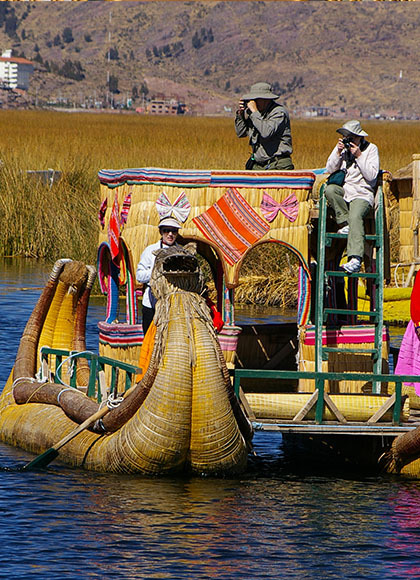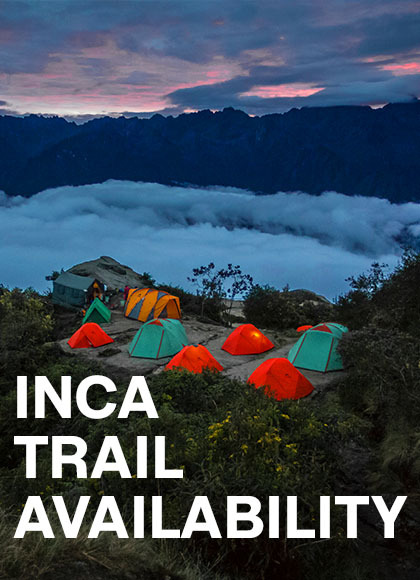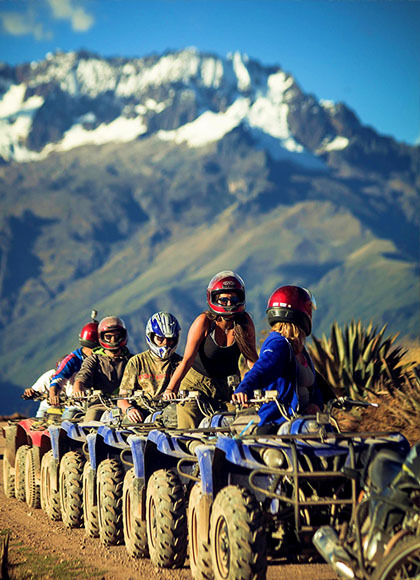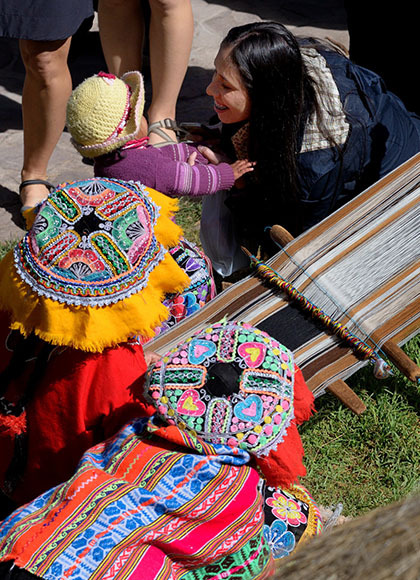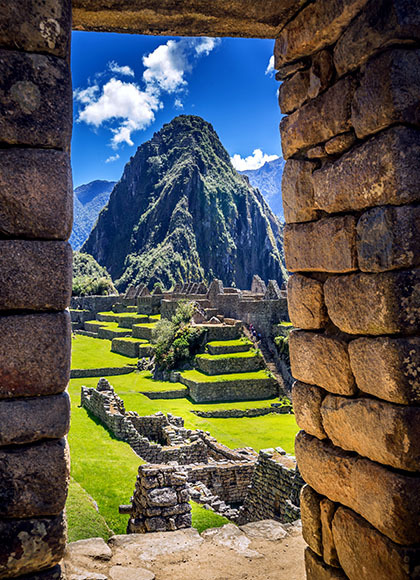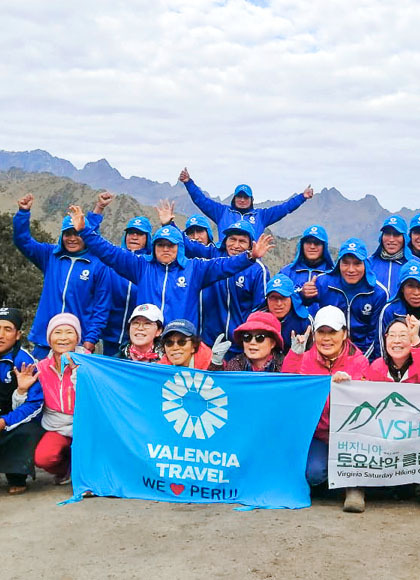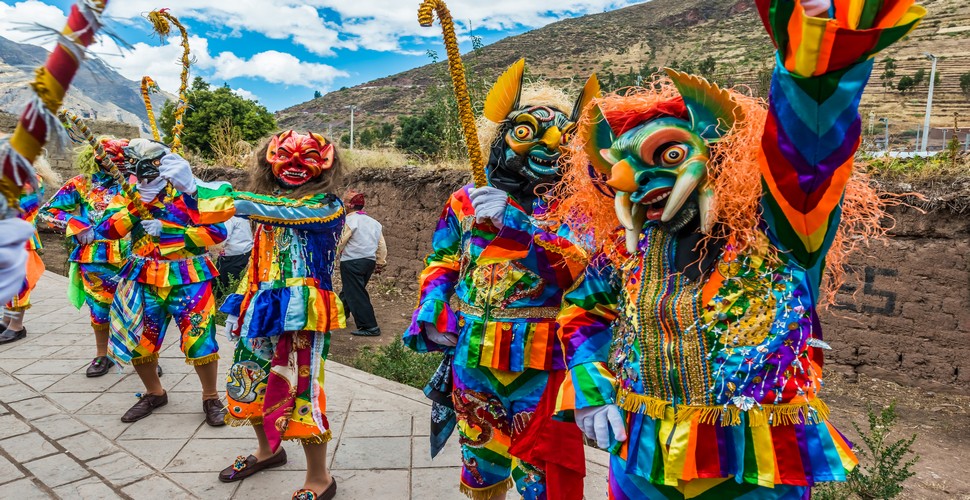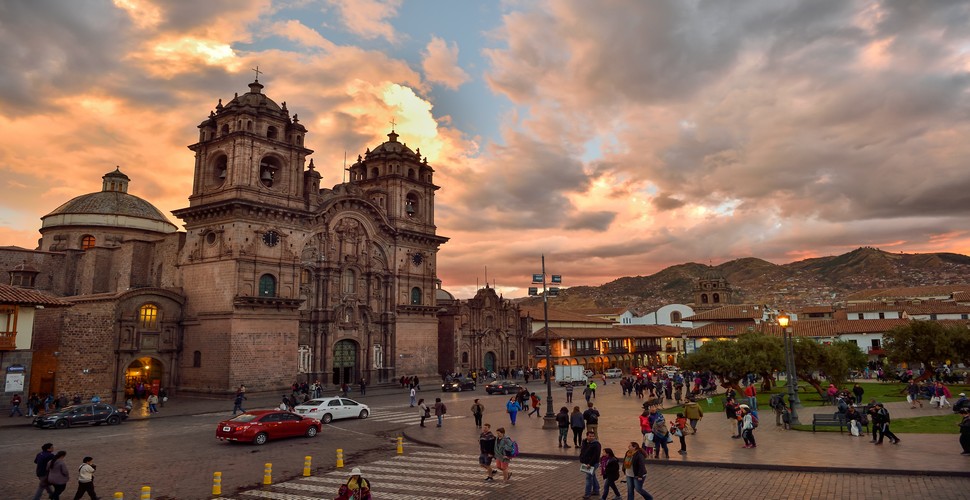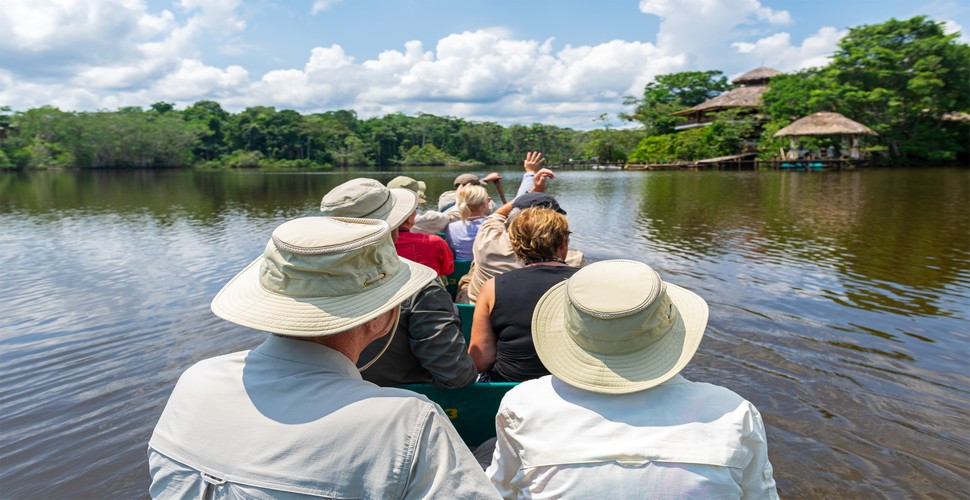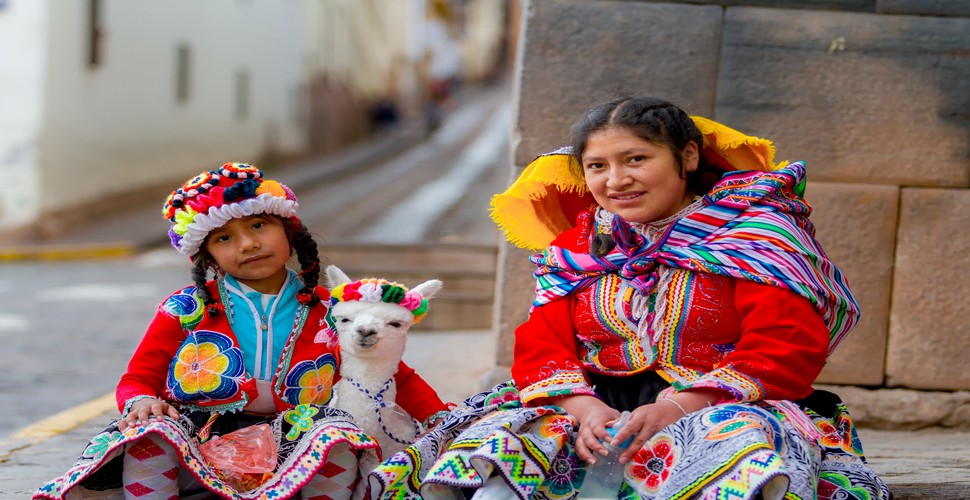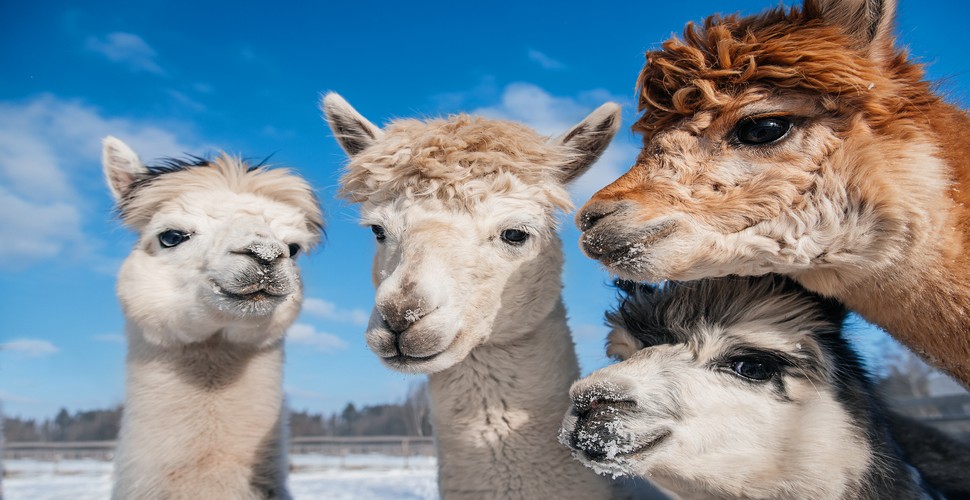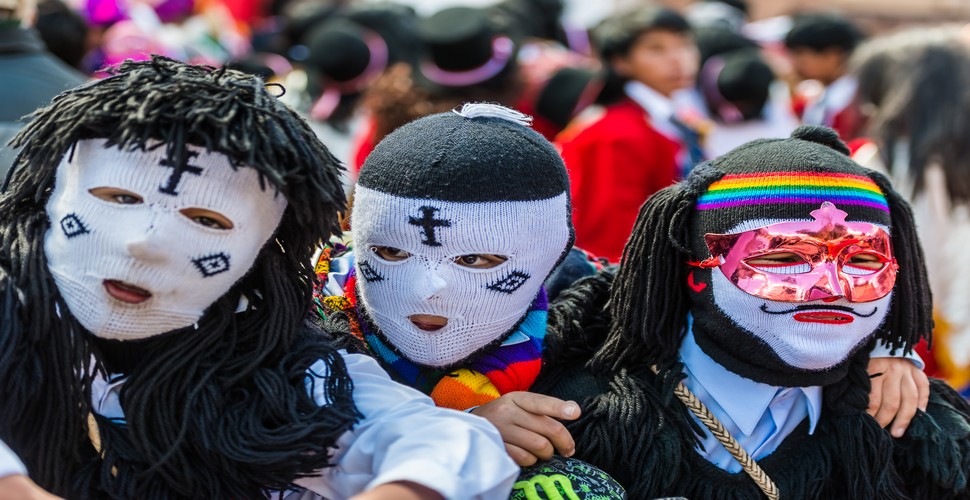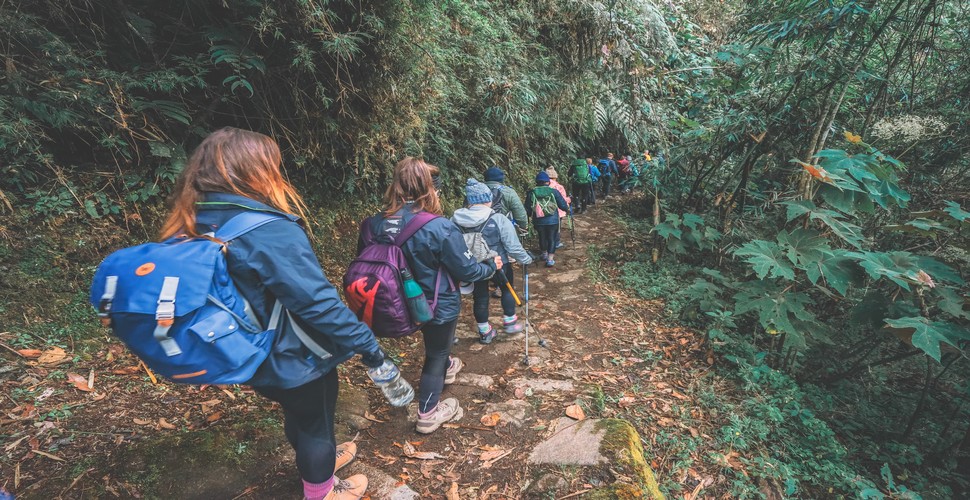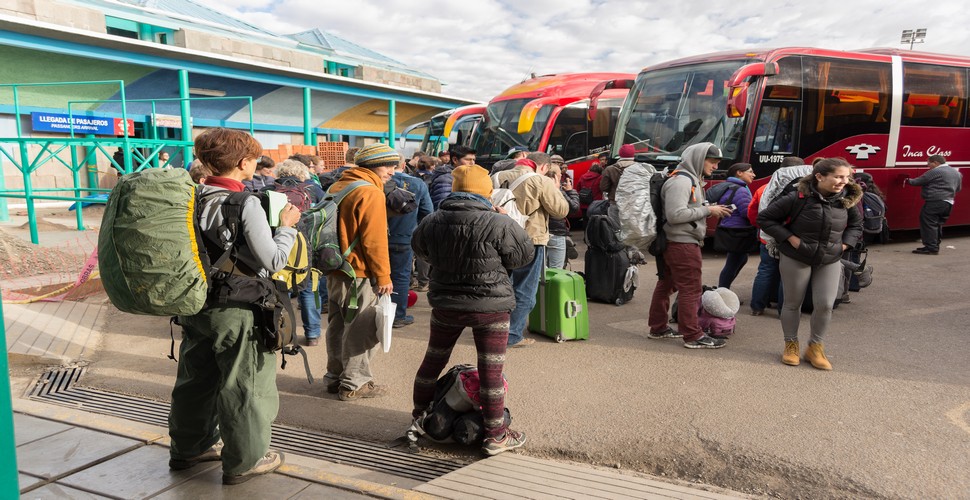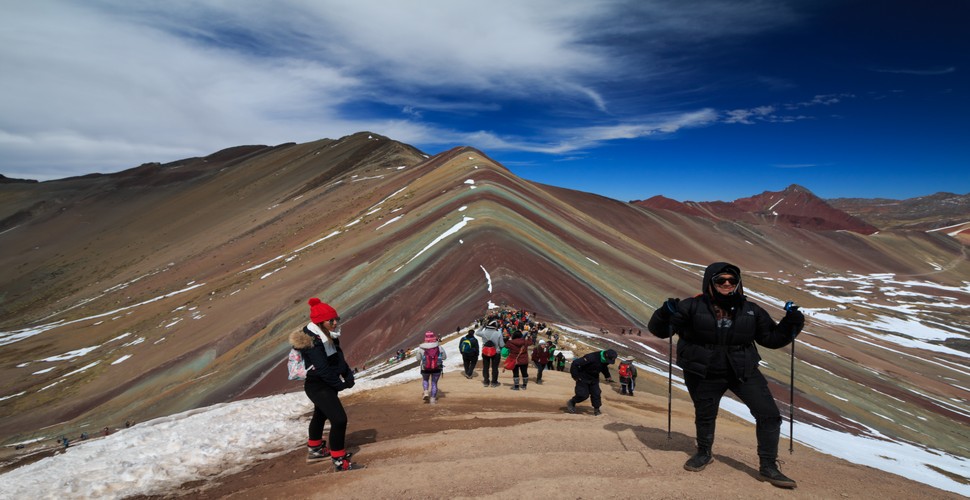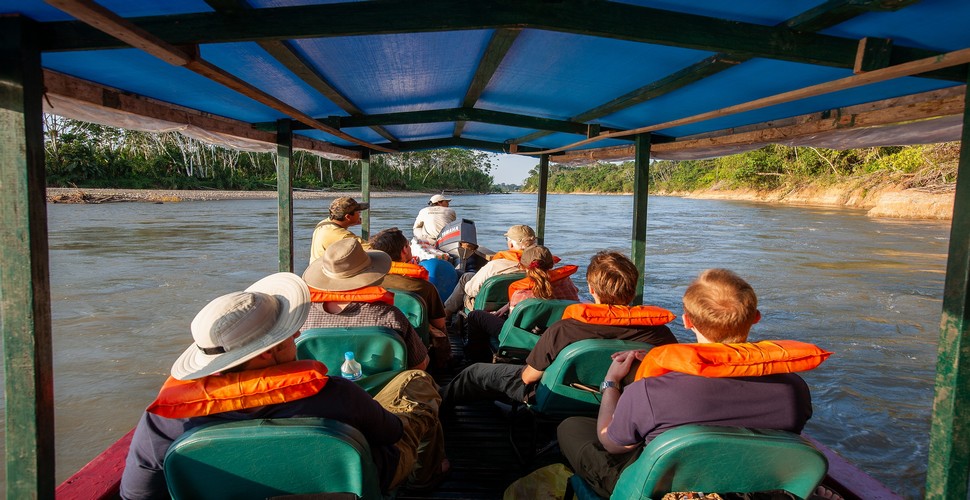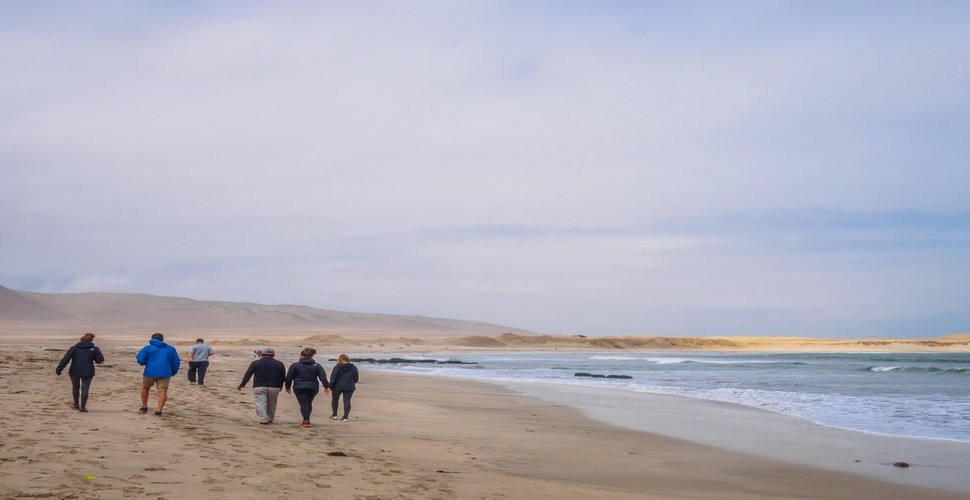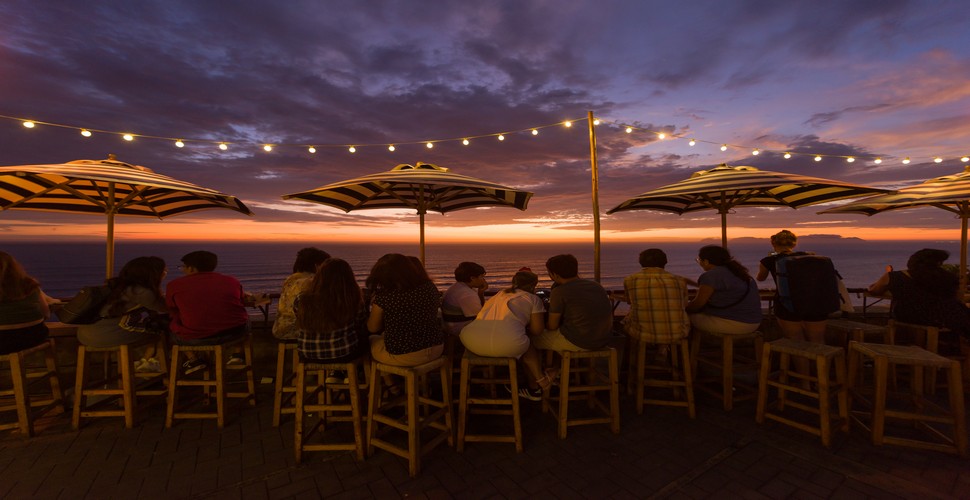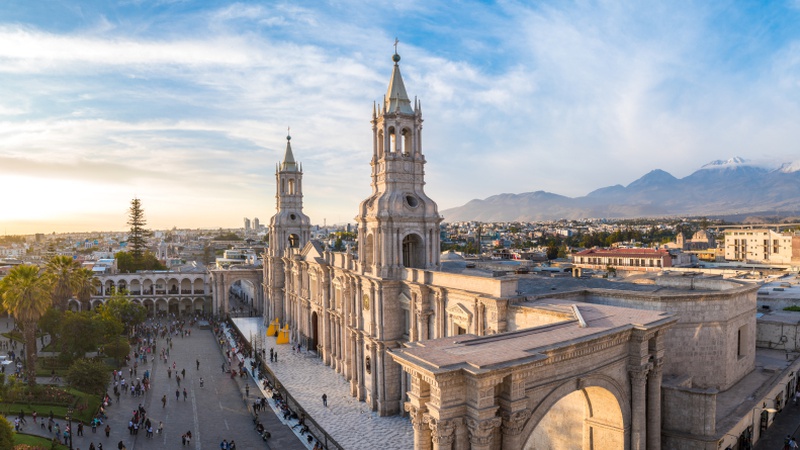
Written by:Claire Dean
Published: 23-08-2023
As the days grow longer and the winter chill fades away, the allure of spring break beckons us to seek adventure and exploration. If you're in search of a captivating and culturally rich destination, look no further than Peru. This South American gem boasts a harmonious blend of history, natural beauty, vibrant traditions, and a booming social life that make it the perfect spring break getaway. From the majestic heights of the Andes Mountains to the mysterious depths of the Amazon rainforest, Peru offers an unparalleled experience for travelers seeking both relaxation and adventure, as well as a lot of fun!
Trekking in The Amazon
Why Choose Peru for Your Spring Break Adventure?
Historical Marvels
Peru is steeped in a rich tapestry of history, most notably represented by the awe-inspiring Machu Picchu. This ancient Incan city, nestled high in the Andes Mountains, is a UNESCO World Heritage site and one of the New Seven Wonders of the World. Then there is the magnificent Rainbow Mountain which offers other-worldly trekking in unique Andean landscapes. You can explore the intricate stone pathways, Inca Stonemasonry, and breathtaking views in Cusco, which is an experience that promises to leave an indelible mark on any traveler.
Cultural Diversity
Peruvian culture is a fascinating blend of indigenous traditions and colonial influences. In cities like Cusco and Lima, visitors can witness this dynamic fusion in the architecture, cuisine, and lively festivals. Don't miss the chance to savor Peruvian delicacies like ceviche, lomo saltado, and quinoa-based dishes, all of which reflect the country's unique culinary heritage.
Scenic Landscapes
From the arid beauty of the coastal desert to the lush expanse of the Amazon rainforest, Peru offers an astonishing array of landscapes. The Colca Canyon, twice as deep as the Grand Canyon, provides breathtaking vistas and a chance to witness the majestic Andean condor in flight. Additionally, the tranquil waters of Lake Titicaca, the highest navigable lake in the world, offer a serene escape surrounded by snow-capped peaks.
Thrilling Adventures
For the adventure enthusiasts, Peru presents an array of thrilling activities. Embark on a trek along the Inca Trail, or Salkantay, culminating in the awe-inspiring arrival at Machu Picchu at sunrise. Alternatively, journey into the heart of the Amazon rainforest, where guided tours provide opportunities for wildlife spotting, jungle exploration, and even encounters with indigenous communities.
Warm and Welcoming People
Peruvians are renowned for their warmth and hospitality. Engage with local communities, learn about their customs, and perhaps even partake in traditional ceremonies. Such interactions not only enrich your travel experience but also contribute to sustainable and responsible tourism practices.
Embark on a Cultural Odyssey
Peru boasts a rich tapestry of history and culture, with iconic landmarks such as Machu Picchu, Cusco, and the Sacred Valley. Immerse yourself in the fascinating heritage of the Incas and witness the blend of ancient traditions with modern life.
Diverse Landscape and Outdoor Thrills
From the Andes Mountains to the Amazon Rainforest, Peru offers a kaleidoscope of landscapes. Whether you're a nature enthusiast, thrill-seeker, or culture buff, Peru caters to all, providing opportunities for hiking, wildlife spotting, and exploring archaeological wonders.
Culinary Delights
Peru is a haven for foodies, known for its delectable cuisine. Indulge in ceviche by the coast, savor the flavors of Peruvian street food, and try the renowned quinoa dishes. Culinary enthusiasts will find their taste buds dancing with delight.
Authentic Encounters
Engage with local communities and witness firsthand their way of life. Homestays and cultural exchanges offer an authentic experience, fostering a deeper connection with the people and traditions of Peru.
A Blend of Ancient and Modern
While Peru boasts a rich history, it's also a modern and evolving nation. Cities like Lima and Cusco offer vibrant nightlife, trendy neighborhoods, and a burgeoning arts scene. Visitors can explore contemporary galleries, sample craft beers, and dance the night away to live music.
Peruvian Costume
Why a Peru Spring Break is Worth It
Peru boasts diverse landscapes, including the Amazon rainforest, the Andes Mountains, and the Pacific coastline. This diversity allows for a range of outdoor activities, from hiking the Inca Trail to exploring the Amazon River basin or relaxing on the beaches of Mancora. Peru is home to ancient civilizations, including the Inca Empire. The iconic Machu Picchu, a UNESCO World Heritage site, is a must-visit destination for history and culture enthusiasts. Additionally, cities like Cusco and Lima showcase a blend of indigenous and colonial influences. Peru offers various adventure sports and activities such as trekking, paragliding, surfing, and zip-lining. The diverse geography provides a backdrop for thrilling experiences that cater to different interests and skill levels. Depending on the timing of your spring break, you might have the chance to participate in or witness vibrant festivals and events. Semana Santa (Holy Week) is celebrated with religious processions and events throughout the country. Compared to some other international destinations, Peru can be relatively affordable for travelers. This makes it an attractive option for students and budget-conscious travelers looking for a memorable experience without breaking the bank.
Cusco Sundown
Sample Itineraries for Spring Break
1. Classic Highlights and Ancient Wonders of Peru
Duration: 10-14 days
Itinerary:
Lima (2 days):
Explore the historic center, visit the Larco Museum, and indulge in Peruvian cuisine.
Cusco (3 days):
Acclimate to the altitude, explore the city, and visit nearby archaeological sites like Sacsayhuamán.
Sacred Valley (2 days):
Visit Pisac and Ollantaytambo, experiencing local markets and ancient ruins.
Machu Picchu (2 days):
Take the train to Aguas Calientes, visit Machu Picchu, and consider hiking the Inca Trail or taking the bus.
Return to Cusco (1 day):
Explore any remaining sites in Cusco or relax before departing.
Departure:
Return to Lima and depart.
2. Amazon Rainforest Adventure
Duration: 7-10 days
Itinerary:
Lima (1 day):
Arrive in Lima and spend the day exploring.
Flight to Puerto Maldonado (3 days):
Explore the Amazon Rainforest, take guided wildlife tours, and stay in an eco-lodge.
Return to Lima (1 day):
Fly back to Lima for a day of relaxation or exploration.
Cusco (2 days):
Explore the city and nearby archaeological sites.
Departure:
Return to Lima and depart.
3. Coastal Cities and Archaeological Gems
Duration: 7-9 days
Itinerary:
Lima (2 days):
Explore the city's neighborhoods, visit museums, and enjoy the culinary scene.
Paracas and Huacachina (2 days):
Take a bus to Paracas, visit the Ballestas Islands, and then head to the desert oasis of Huacachina for sandboarding and dune buggy rides.
Nazca (1 day):
Visit the Nazca Lines on a day trip from Huacachina.
Arequipa (2 days):
Explore the historic city center, visit the Santa Catalina Monastery, and enjoy the local cuisine.
Departure:
Return to Lima or depart from Arequipa.
Tips for Customization
Adjust the duration of your stay in each location based on your interests.
Consider adding acclimatization days, especially if you're visiting high-altitude destinations.
Research and book activities in advance, especially for popular attractions like Machu Picchu.
Check for local events or festivals happening during your travel dates.
Machu Picchu Lookout
How Difficult is a trip to Peru for Spring Break?
1. Altitude
Peru is known for its high-altitude destinations, including Cusco (3,400 meters/11,150 feet) and Machu Picchu. Altitude sickness can affect travelers, especially if ascending rapidly. Consider acclimatization days, stay hydrated, and be aware of altitude-related symptoms.
2. Trekking and Outdoor Activities
If you plan on trekking, especially on trails like the Inca Trail, it's essential to assess your fitness level. Trekking can range from moderate to challenging, and the altitude adds an extra layer of difficulty. Proper preparation, including physical fitness and acclimatization, is crucial.
3. Weather Conditions
Weather conditions can vary based on the regions you plan to visit and the time of year. In the Andean highlands, temperatures can drop significantly at night. Coastal regions may experience milder climates, and the Amazon can be hot and humid. Be prepared for varying weather conditions.
4. Cultural and Language Differences
While English is spoken in tourist areas, especially in cities, there might be language barriers in more remote or less touristy regions. Learning some basic Spanish phrases can enhance your experience.
5. Transportation
Navigating local transportation, especially in cities and rural areas, may present some challenges. Buses and taxis are common, and domestic flights may be necessary for longer distances. Plan your routes and be aware of potential delays.
6. Crowds at Popular Sites
During peak tourist seasons, popular attractions like Machu Picchu can be crowded. Planning your visits during less busy times or opting for less crowded alternatives can mitigate this challenge.
7. Health Considerations
Health precautions, including vaccinations and prevention of altitude sickness, should be taken into account. Consult with a healthcare professional before your trip.
8. Adaptability and Flexibility
Peru is a country with diverse landscapes and cultures. Being adaptable and flexible in your plans, especially in response to weather changes or unexpected opportunities, can enhance your experience.
Peru Trekking
Trip Advisor Comments About Spring Break in Peru
"Our Spring Break in Peru was an absolute cultural delight! From exploring the ancient wonders of Machu Picchu to savoring the flavors of local markets in Cusco, every moment was a feast for the senses. The warmth of the Peruvian people made our journey unforgettable."
"Spending Spring Break in Peru's Amazon Rainforest was a dream come true. The lush landscapes, diverse wildlife, and immersive experiences with local tribes were beyond words. A true paradise for nature lovers!"
"Visiting Machu Picchu during Spring Break was surreal. The misty morning, the ancient ruins, and the breathtaking views left us speechless. The trek along the Inca Trail was challenging but absolutely worth it!"
"Be mindful of the altitude! We experienced some mild altitude sickness in Cusco, so take it easy on the first day, drink lots of water, and consider coca tea. It's a small price to pay for the incredible experiences awaiting you."
"The weather can be unpredictable, especially during Spring Break. Pack layers and a good rain jacket. We encountered a mix of sun and rain, but it didn't dampen our spirits!"
"We visited during peak season, and Machu Picchu was quite crowded. To beat the crowds, we went for the early morning entrance. Definitely recommend getting tickets in advance and planning accordingly."
"Foodies, rejoice! Peruvian cuisine is a highlight of any trip. Ceviche by the coast, alpaca steak in the highlands, and the exotic Amazonian flavors – we ate our way through Peru and loved every bite!"
"Don't just stick to the main attractions. We stumbled upon hidden gems like the colorful Rainbow Mountain. It's a bit off the beaten path but so worth the journey!"
"The people of Peru stole our hearts. Whether it was the friendly faces in Lima or the welcoming villagers in the Andes, the hospitality was exceptional. We felt like we were part of the community."
Amazon Boat Trip
The Best Time to Visit Peru for Spring Break
The best time to visit Peru for Spring Break depends on the specific experiences you're seeking, as the country exhibits diverse climates and regions. Generally, the dry season, which is winter in the Southern Hemisphere, is considered an ideal time for travel. The months from May to September are particularly popular for tourism due to more predictable weather conditions. Here's a breakdown of the best times to visit different regions of Peru:
1. Coastal Regions (Lima, Paracas, Nazca Lines):
Best Time: Year-round.
Considerations: Coastal areas experience a mild climate throughout the year. The winter months (May to September) are cooler and generally have less humidity.
2. Andean Highlands (Cusco, Machu Picchu, Arequipa):
Best Time: May to September.
Considerations: This is the dry season, providing clearer skies and making it an excellent time for trekking the Inca Trail. However, temperatures can drop significantly at night.
3. Amazon Rainforest (Iquitos, Puerto Maldonado):
Best Time: May to September.
Considerations: The dry season means lower water levels and better wildlife visibility. However, the Amazon can be visited year-round, and the wet season (December to March) offers lush, green landscapes.
4. Northern Coastal and Highland Regions (Trujillo, Chiclayo, Huaraz):
Best Time: May to September.
Considerations: Similar to the rest of the coast and highlands, this period offers dry weather and is ideal for exploring archaeological sites and trekking.
5. Southern Coastal and Highland Regions (Arequipa, Colca Canyon):
Best Time: May to September.
Considerations: Dry weather makes this period optimal for exploring Arequipa and the Colca Canyon. However, temperatures can vary, especially at higher altitudes.
6. General Considerations:
Crowds: The dry season tends to be the peak tourist season, and popular sites can be more crowded. Booking accommodations and tours in advance is advisable.
Rainy Season: The rainy season typically occurs from December to March. While some regions experience heavy rainfall, the landscapes are lush and vibrant. It's also a good time for lower-altitude trekking.
7. Altitude Considerations:
If you plan to visit high-altitude destinations like Cusco and Machu Picchu, consider the potential for altitude sickness and acclimatization. The dry season can be colder, especially at night.
8. Events and Festivals:
Check the calendar for local events and festivals that may enhance your experience. Inti Raymi in Cusco (June) is a notable celebration.
Local Cusco Children
Can you Travel to Peru for Spring Break on your own?
Peru is a great country to travel on your own. Whether you want the solo experience or whether you want to join up with other travelers along the way, you can encounter many different options for your specific travel style. Here are some things to bear in mind.
1. Language Considerations:
While English is spoken in tourist areas, learning a few basic Spanish phrases can enhance your experience and interactions with locals.
2. Health Preparations:
Consult with a healthcare professional for any necessary vaccinations and health precautions, especially if you plan on trekking or visiting the Amazon.
3. Safety Considerations:
Peru is generally safe for tourists, but it's important to be vigilant, especially in crowded areas. Keep your belongings secure and be cautious of your surroundings.
4. Solo Traveler-Friendly Activities:
Participate in group tours, join guided activities, or take advantage of solo traveler-friendly excursions. This can provide a social aspect to your trip and allow you to meet fellow travelers.
5. Local Cuisine:
Explore local markets and eateries to indulge in Peruvian cuisine. Food is a significant part of the culture, and trying local specialties is a must.
6. Connect with Locals:
Engage with locals through cultural events, language exchanges, or homestay experiences. This can provide a deeper understanding of the local way of life.
7. Adventurous Activities:
If you're an adventure enthusiast, Peru offers a range of activities, from trekking the Inca Trail to exploring the Amazon Rainforest. Research and plan accordingly.
8. Budgeting:
Plan your budget carefully, taking into account accommodation, transportation, meals, activities, and miscellaneous expenses.
9. Travel Insurance:
Purchase comprehensive travel insurance to cover potential emergencies, trip cancellations, and medical expenses.
10. Local SIM Card:
Consider getting a local SIM card for your phone to have access to data and stay connected during your travels.
11. Flexible Mindset:
Embrace flexibility and be open to adapting your plans based on local recommendations or unexpected opportunities.
12. Enjoy the Journey:
Solo travel is an enriching experience. Embrace the freedom, make new connections, and enjoy the journey.
Solo travel in Peru can be empowering and offers a unique opportunity for self-discovery. By planning thoughtfully and staying open to new experiences, you'll likely create lasting memories and forge a deeper connection with this captivating country.
Machu Picchu Cocktail
What to Consider When You Choose a Spring Break in Peru
1. Type of Experience: Define the type of experience you're seeking. Whether it's cultural exploration, adventure, relaxation, or a mix of these, Peru offers diverse options.
2. Weather and Season: Research the weather conditions during your travel dates and pack accordingly. Consider the dry season (May to September) for trekking and outdoor activities.
3. Altitude Considerations: Be aware of the high-altitude destinations in Peru, especially if you're prone to altitude sickness. Plan your itinerary to allow for acclimatization.
4. Itinerary Options: Explore different itinerary options based on your interests. Consider classic routes like the Inca Trail, the Amazon Rainforest, coastal cities like Lima, or a combination of these.
5. Budget: Determine your budget for the trip, including flights, accommodation, activities, meals, and miscellaneous expenses. Peru caters to various budget ranges.
6. Duration of the Trip: Decide on the duration of your Spring Break. Peru has a lot to offer, and the length of your trip will impact the places you can explore.
7. Travel Style: Choose your preferred travel style – whether it's independent travel, guided tours, or a mix of both. Each has its advantages, and Peru accommodates all styles.
8. Accommodation Preferences: Research and choose accommodations that align with your preferences, whether it's budget hostels, boutique hotels, or luxury resorts.
9. Activities and Interests: Identify the activities and attractions that align with your interests. Peru offers a wide range, from historical sites like Machu Picchu to outdoor adventures in the Amazon.
10. Health Considerations: Consider your health and fitness level, especially if you plan on trekking or engaging in physically demanding activities. Consult with a healthcare professional regarding vaccinations and altitude.
11. Safety and Travel Alerts: Check travel advisories and alerts for Peru. Stay informed about safety considerations in the regions you plan to visit.
12. Language and Communication: While English is spoken in tourist areas, learning basic Spanish phrases can enhance your experience and interactions with locals.
13. Cultural Sensitivity: Familiarize yourself with Peruvian customs and cultural norms to ensure respectful interactions with locals.
14. Travel Insurance: Purchase comprehensive travel insurance to cover potential emergencies, trip cancellations, and medical expenses.
15. Local Transportation: Understand the transportation options within Peru. Decide whether you'll rely on buses, domestic flights, or a combination.
16. Currency and Payment Options: Familiarize yourself with the local currency (Peruvian Sol) and understand payment options. Inform your bank about your travel dates to avoid any issues with card transactions.
17. Vaccinations and Health Precautions: Check with your healthcare provider for recommended vaccinations and health precautions specific to Peru.18. Local Cuisine: If you're a food enthusiast, research and plan to indulge in Peruvian cuisine. Try local specialties and explore street food.
Llama Loveliness!
How to Get to Peru for your Spring Break
Fly into Lima's Jorge Chávez International Airport, a major hub with excellent connectivity. Domestic flights and buses can transport you to key destinations like Cusco Puno and Arequipa.
Cusco Festival
Essential packing List for Spring Break in Peru
Clothes
-
Warm Fleece/Down Jacket
-
Lightweight T-Shirts and Tops: For warmer regions and cities.
-
Long-Sleeved Shirts: To protect against the sun, especially at higher altitudes.
-
Lightweight Jacket or Sweater: Evenings can be cool, especially in mountainous areas.
-
Waterproof Jacket: Essential for unpredictable weather, especially during the rainy season.
-
Comfortable Pants: Lightweight for lower altitudes, warmer options for cooler regions.
-
Shorts: Suitable for warmer climates.
-
Swimwear: If your itinerary includes beach or hot spring destinations.
-
Hiking Boots or Sturdy Shoes: Essential for trekking or exploring uneven terrain.
-
Sandals or Comfortable Walking Shoes: For city exploration and casual outings.
-
Socks and Underwear: Pack enough for the duration of your trip.
Accessories
-
Sun Hat or Cap: Protects against the sun, especially at higher altitudes.
-
Sunglasses: UV protection is crucial, especially in mountainous areas.
-
Scarf or Buff: Useful for various purposes, including protecting against wind and sun.
Travel Essentials
-
Passport and Visa: Ensure your passport is valid for at least six months beyond your intended departure date.
-
Travel Insurance Documents: Include details of your coverage and emergency contact information.
-
Flight Itinerary and Accommodation Confirmations: Printed or accessible digitally.
-
Credit/Debit Cards and Cash: Notify your bank of your travel dates.
-
Travel Adapter: Ensure it's suitable for Peru's electrical outlets.
-
Portable Power Bank: Keep your devices charged on the go.
-
Daypack or Backpack: For day trips and carrying essentials.
Health and Personal Care
-
Prescription Medications: Sufficient supply for the duration of your trip.
-
First Aid Kit: Include bandages, pain relievers, antihistamines, and any personal health items.
-
Sunscreen: High SPF for protection at higher altitudes.
-
Insect Repellent: Especially if you're visiting the Amazon Rainforest.
-
Toiletries: Toothbrush, toothpaste, shampoo, conditioner, etc.
Technology
-
Smartphone and Charger: Download offline maps and useful travel apps.
-
Camera and Accessories: Capture the beauty of Peru.
Miscellaneous Items
-
Reusable Water Bottle: Stay hydrated, especially at higher altitudes.
-
Snacks: Non-perishable snacks for long journeys or when options are limited.
-
Travel Pillow and Blanket: Useful for comfort during transportation.
-
Small Locks: Secure your luggage during transit.
-
Journal and Pen: Document your experiences.
Optional Items
-
Binoculars: If you plan on bird-watching or wildlife spotting.
-
Travel Umbrella: For unexpected rain.
-
Trekking Poles: If you're planning on trekking.
-
Guidebook or Phrasebook: Provides useful information and language assistance.
Pack Light!
How to Prepare For Your Spring Break in Peru
1. Research and Itinerary Planning:
Research the regions you plan to visit, including major attractions, cultural norms, and local customs.
Create a flexible itinerary that balances activities, acclimatization days, and relaxation.
2. Health Preparations:
Schedule a visit with your healthcare provider to discuss vaccinations, altitude sickness prevention, and any personal health concerns.
3:Travel Insurance:
Purchase comprehensive travel insurance that covers medical emergencies, trip cancellations, and other unforeseen events.
4. Essentials:
Travel Documents:
Ensure you have a valid passport, any necessary visas, and printed copies of your travel itinerary.
Money:
Inform your bank of your travel dates, and carry both local currency (Peruvian Soles) and a credit/debit card.
Electronics:
Pack a travel adapter, power bank, and any electronic devices you'll need. Download offline maps and entertainment for the journey.
5. Pre-Departure Checklist:
Notify Authorities:
Inform family or friends of your travel plans and provide them with copies of your itinerary and important documents.
Check Weather Conditions:
Monitor weather conditions for your travel dates and adjust your packing accordingly.
6. Language Preparation:
Learn Basic Phrases:
Familiarize yourself with common Spanish phrases to facilitate communication with locals.
7. Cultural Awareness:
Respect Local Customs:
Research and respect local customs and traditions to ensure a culturally sensitive experience.
Familiarize yourself with tipping practices in Peru.
8. Safety Measures:
Emergency Contacts:
Save emergency contact numbers, including local authorities and the nearest embassy or consulate.
Consider installing safety apps on your phone.
9. Pack a First Aid Kit:
Include essential medications, a basic first aid kit, and any personal health items you may need.
10. Travel Apps:
Download useful travel apps, such as translation apps, currency converters, and weather apps.
11. Photocopies and Digital Backups:
Make photocopies of important documents (passport, insurance, etc.) and store digital copies securely in the cloud.
12. Check Visa Requirements:
Ensure you have the necessary visas for your trip to Peru.
Small Back Pack
How to Deal With Altitude Symptoms on Your Spring Break
Gradual Ascent:
One of the most crucial factors in preventing altitude sickness is a gradual ascent. If possible, plan your itinerary to include a few days of acclimatization before reaching high-altitude destinations.
Stay Hydrated:
Drink plenty of water to combat dehydration, a common exacerbating factor at high altitudes. Avoid excessive alcohol and caffeine consumption, as these can contribute to dehydration.
Avoid Overexertion:
Take it easy during the first few days at high altitudes. Avoid strenuous activities, and listen to your body. If you feel fatigued, rest. Save more demanding activities for later in your trip.
Acclimatization Days:
If you're ascending to higher altitudes, plan acclimatization days where you stay at the same elevation without further ascent. This allows your body to adjust gradually.
Medications:
Consider medications like acetazolamide (Diamox), which can help prevent and alleviate symptoms of altitude sickness. Consult with your healthcare provider before taking any medication, as they can advise on dosage and potential side effects.
Diet:
Maintain a light and easily digestible diet. Avoid heavy meals, and ensure you're getting enough carbohydrates. Some travelers find that foods rich in carbohydrates can help alleviate symptoms.
Local Remedies:
In some regions, locals may recommend traditional remedies like coca tea. While scientific evidence on its efficacy is inconclusive, some travelers find it helpful.
Know Your Limits:
Everyone acclimatizes differently. If you're unsure about your ability to handle high altitudes, consider consulting with a healthcare professional before your trip.
Coca Tea
Pro Tips for your Spring Break in Peru
-
Sun Protection: The high-altitude sun can be intense, so pack sunscreen and a hat.
-
Currency Exchange: Have local currency (Peruvian Sol) for remote areas with limited card acceptance.
-
Learn Basic Spanish Phrases: While many Peruvians in tourist areas speak English, learning a few basic Spanish phrases can go a long way in facilitating communication and earning the appreciation of locals.
-
Flexible Itinerary: Keep your itinerary somewhat flexible, allowing for unexpected discoveries and experiences. Serendipity often leads to the most memorable moments.
-
Local Currency: Carry some cash in Peruvian Soles, especially in rural areas where card acceptance may be limited. It's also advisable to inform your bank about your travel dates to avoid any issues with card transactions.
-
Stay Hydrated: The high-altitude regions of Peru can be dehydrating. Drink plenty of water, especially when hiking or spending extended periods outdoors.
-
Photography Etiquette: When taking photos of locals, especially in rural areas, ask for permission first. Respect local customs and traditions, and avoid intrusive photography.
-
Respect Altitude: If you're sensitive to altitude, consider acclimatizing for a day or two before engaging in strenuous activities. Altitude sickness can affect anyone, regardless of fitness level.
-
Bargaining in Markets: Bargaining is a common practice in Peruvian markets. Politely negotiate prices when shopping for souvenirs, but remember to be fair and respectful.
-
Local Culinary Adventures: Step out of your comfort zone and try local delicacies. Street food and markets often offer authentic and delicious dishes. Don't miss trying ceviche, anticuchos, and quinoa-based specialties.
-
Download Offline Maps: Before heading into areas with limited connectivity, download offline maps on your smartphone. This can be invaluable for navigation, especially in remote locations.
-
Weather-Appropriate Clothing: Peru's diverse geography means varying climates. Pack layers and be prepared for different weather conditions, especially if you're moving between regions with different altitudes.
-
Responsible Tourism: Be a responsible traveler. Respect local customs, minimize your environmental impact, and contribute positively to the communities you visit.
-
Stay Healthy: Pack a basic medical kit with essentials like pain relievers, bandages, and any personal medications. Check with your healthcare provider about vaccinations before your trip.
-
Connect with Locals: Engage with locals, whether through homestays, cultural events, or simply striking up conversations. It's a great way to gain insights into the local way of life and create meaningful connections.
Respect Altitude!
How Much Does a Spring Break in Peru Cost?
The cost of a Spring Break vacation to Peru can vary widely depending on various factors such as the duration of your trip, the activities you plan to engage in, your choice of accommodations, transportation preferences, and personal spending habits.
Flights
International flights: Costs can range from a few hundred to over a thousand dollars, depending on your departure location, the time of booking, and the class of service.
Domestic flights within Peru: If you plan to visit multiple cities, budget for internal flights, which can range from $50 to $200 per leg.
Accommodation
Accommodation costs vary based on your choice of hotels/hostels. Budget accommodations can start at around $20-$50 per night, while mid-range options may range from $70-$150 per night. Luxury hotels can exceed $200 per night.
Transportation
Local transportation costs, such as taxis, buses, or trains within cities, can add up. Budget approximately $10-$30 per day for local transportation.
Activities and Tours
Entrance fees to attractions and guided tours can contribute significantly to your budget. For example, entrance to Machu Picchu can range from $30 to $70, depending on factors like citizenship and age. Guided tours may cost anywhere from $50 to $150 or more.
Food
Dining costs can vary. Street food and local markets offer budget-friendly options, while dining in restaurants may cost $10-$30 per meal.
Miscellaneous Expenses
Miscellaneous expenses, including tips, souvenirs, and unforeseen costs, should be considered. Budget an additional 10-20% of your total expenses for these items.
Travel Insurance
It's advisable to have travel insurance, and the cost will depend on factors such as coverage, duration, and your age.
Currency Exchange and ATM Fees
Factor in fees associated with currency exchange and ATM withdrawals, especially if you plan on using cash.
Pre-Trip Expenses
Consider expenses such as vaccinations, travel gear, and other preparations, which can vary based on individual needs.
Amazon Rainforest Tour
FAQs
Q: Is Machu Picchu the only highlight?
A: While Machu Picchu is iconic, Peru offers diverse attractions, from the Nazca Lines to the Colca Canyon.
Q: Do I need a visa?
A: Most travelers can enter Peru visa-free for up to 183 days. Check the latest requirements based on your nationality.
Q: Are vaccinations required for travel to Peru?
A: Yes, certain vaccinations are recommended, including yellow fever, Hepatitis A and B, and typhoid. Consult with your healthcare provider well in advance of your trip.
Q: What's the best way to handle currency and payments in Peru?
A: While credit cards are widely accepted in urban areas, it's advisable to carry some cash, especially in rural or remote regions. ATMs are available in major cities for currency withdrawal.
Q: Is the tap water safe to drink in Peru?
A: It's recommended to drink bottled or purified water to avoid potential stomach issues. In urban areas, bottled water is readily available.
Q: How diverse is Peru's cuisine, and are there options for vegetarians/vegans?
A: Peru's cuisine is incredibly diverse, and vegetarians/vegans will find plenty of options. From quinoa dishes to fresh fruits and vegetables, Peruvian cuisine caters to various dietary preferences.
Q: What should I be cautious about in terms of safety during my trip?
A: While Peru is generally safe for tourists, it's advisable to be cautious of petty theft in crowded areas. Keep an eye on your belongings and avoid displaying valuable items.
Q: Do I need to speak Spanish to travel in Peru?
A: While basic Spanish phrases can be helpful, especially in more remote areas, many tourist destinations have English-speaking locals. A phrasebook or translation app can also be handy.
Q: Can I visit Machu Picchu without hiking the Inca Trail?
A: Absolutely! There are alternative routes and transportation options, including buses and trains, that can take you to Machu Picchu. The Inca Trail is a popular choice, but it's not the only way to reach this iconic site.
Q: How do I handle transportation within Peru, especially if I want to explore multiple cities?
A: Peru has a well-developed transportation network. Domestic flights, buses, and trains are available for inter-city travel. Booking transportation in advance, especially during peak seasons, is recommended.
Q: What is the nightlife like in major cities such as Lima and Cusco?
A: Lima and Cusco offer vibrant nightlife scenes with a mix of traditional Peruvian music, international bars, and clubs. Each city has its unique atmosphere, catering to various tastes.
Q: Is it possible to visit the Amazon Rainforest without an extensive trek?
A: Yes, there are tours that offer boat excursions into the Amazon, providing a comfortable way to explore the rainforest without extensive hiking.
Q: Are there any specific cultural etiquettes or customs I should be aware of in Peru?
A: Peruvians are generally warm and welcoming. It's customary to greet people with a handshake and to be respectful in religious and sacred sites. Learning a few basic customs can enhance your travel.
Paracas Beach
Peru's allure as a spring break destination lies in its ability to cater to a diverse range of interests and preferences. Whether you're an avid history buff, a nature lover, an adventure seeker, or someone who simply wants to unwind in a captivating setting, Peru has it all. Its cultural vibrancy, breathtaking landscapes, and a myriad of activities make it an ideal choice for a spring break that is not only exciting but also culturally enriching. So pack your bags, open your heart to new experiences, and get ready to create unforgettable memories in the mesmerizing land of Peru on this year’s spring break! Find out more here.

